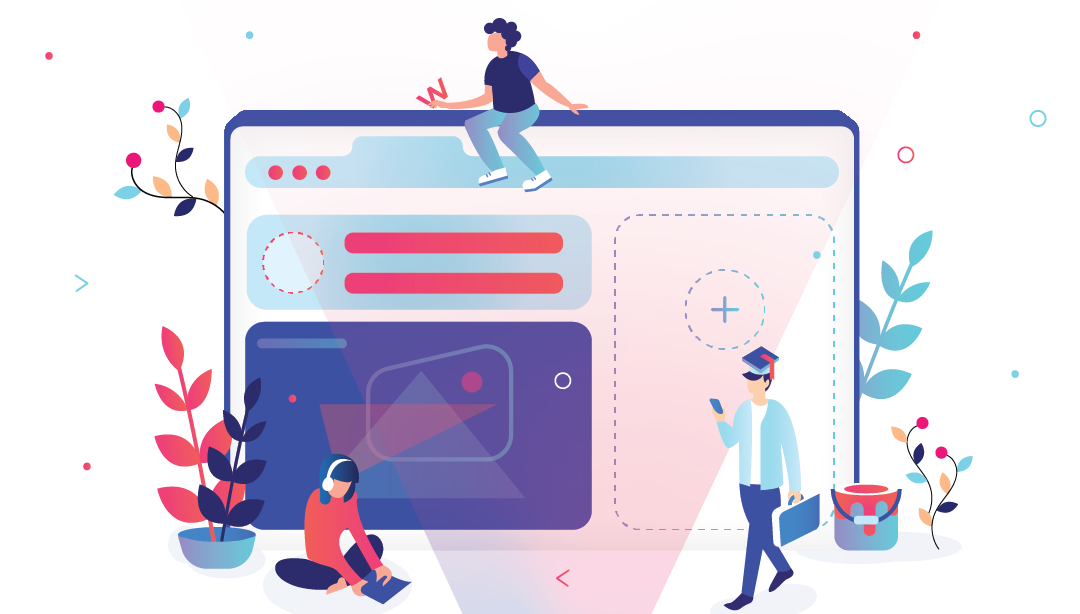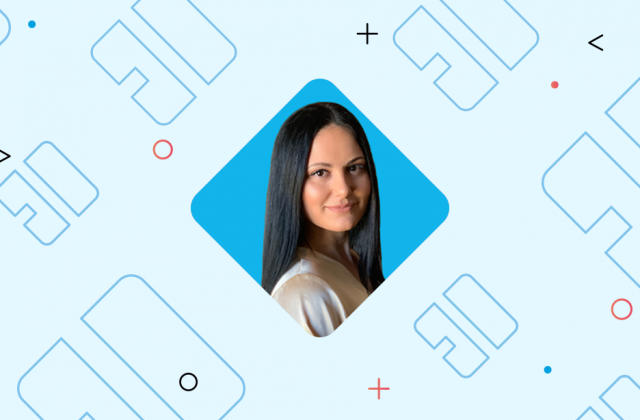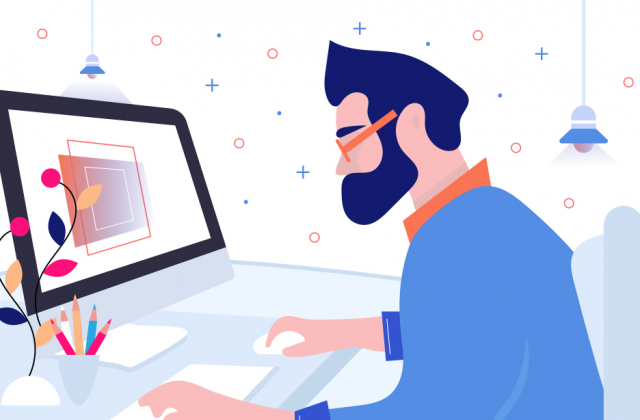UX platform design is all about the overall experience of the learner. Sometimes it is all about UI/UX design.
How the learner feels about the website navigation, organization of information, course structure, and content placement (to list a few) is a challenging task for a designer.
Have you ever wondered why some people buy things online so quickly?
Have you ever thought about what makes your favorite website or app that great?
A well-designed UI could increase your website’s conversion rate by up to 200 percent
Good UX platform design could boost conversion rates up to 400 percent.
Where is the immense power of a good UI/UX design?
User experience design is just as important as any other part of your platform, explains the Nielsen Norman Group, the world leaders in research-based user experience. It won’t matter how visually attractive and beautiful the website is if users and visitors don’t have a clue how to navigate it.
A pleasurable, seductive, and inspiring UI/UX design ensures that people take joy when interacting with your learning platform/app.
- The challenge of every team is to meet the user’s needs.
- Designing the end-to-end experience
- Completely understanding the user
What is a good UI/UX design for new eLearning projects?
Here are the main points.
#1 Learner-centered design in focus
The most important person in the eLearning UI/UX design process is the person who is going to use the platform for learning.
What your eLearning platform has to achieve is to make the learning process easy so the users could focus only on the content. The interface of your eLearning platform should provide flexibility and make learning easy anywhere.
Your e-learning UI/UX design has to be:
- seamless,
- intuitive,
- transparent,
- non-obtrusive,
When we say non-obtrusive, it means that learners have to manage the platform without asking questions about navigation and should rely only on their instincts.
The design should allow learners to completely focus on the learning process and the content which will, in the end, ensure the best results for your business.
#2 E-learning UI and predictability in interactions
‘What to do next’ should come naturally to the user. If the navigation of your elearning platform design is not intuitive, UI design is failing to meet the needs of users. Your users should never ask themselves ‘How do I open this tab?’ or ‘How do I close this pop-up?’
For the best conversion, navigation should be designed in an understandable, clear, and logical, way. Users should intuitively act and know what to do next naturally.
If the predictability is included, a positive experience will follow, thus it will improve your chances of successfully meeting the user’s expectations. When your users see what they expect to see on the screen, they will feel more comfortable with your platform. After all, satisfied users equal more visits and better conversion.
#3 Clean design and uncluttered pages for the intuitive UX platform design
Clean design enhances the learning focus and improves the elearning UI. When your design is uncluttered with colours and content, a smoother experience for your learners is ensured. This can be achieved with efficient use of white space, but also with clean layouts.
Effective use of white space is oftentimes vital as it works as visual relief. As such, it’s proven to improve learning efficiency.
The combination of a clear hierarchy of design elements, white space, call-to-actions and interactive visual cues for errors and notifications creates a seamless interaction flow.
A CTA, in this case, is here to provide the learner with clear instructions, pointing him in the right direction ( telling the users where to go or what to do next). Take “Watch the game now” or “Take your test” as another example.
This way of designing the CTAs will ensure that the learner can make progress through the course.
Also, design consistency will add to how users feel. The goal is to make them feel at ease and in control, which will certainly put your eLearning platform in favor.
#4 The focus of content structure in on the effective learning process
Beside clear navigation and predictability, the big part of making the learning process easy comes from how the content is structured.
The greatest benefits come if the approach to content is providing a personalized learning experience driven by “self-service”. With “self-service”, the users are able to create their own learning path and to consume knowledge at their own pace.
Learning without difficulties also comes from the way the content is structured. Content should be easy to scan it, written in small paragraphs. Consistent page titles, module titles, section titles, and course titles enhance the entire learning experience.
In addition to being interesting and concise, titles should be descriptive. Users appreciate the transparency and details you have included in the content about the course because they can instantly understand what the page, section, module, or course is all about – simply by its title.
The look & feel you should aim for is the one that will impact the way your learners perceive education. Go for calm colors and modern typography, but also use custom graphics rather than stock photography.
Think of the website speed as well. The content needs to load fast enough to avoid the frustration that could cause a departure of your potential learners.
#5 Gamification + goal-driven design results in empowered elearning UI
Gamification has become an unavoidable trend in the eLearning industry. It creates the learning experience by including many engaging elements that spark the process and knowledge sharing by playing.
There are many ways one can use game elements, from awarding points to winning special badges. Moreover, different motivation triggers or progress bars and other similar elements make the game addictive and more attractive.
Gamification is also effective when the design offers more ways for users to track their progress. After all, users appreciate better UI/UX, especially on your eLearning platform. When they can understand how they are progressing and learning, seeing the results at the end and earning certificates, they get a real sense of achievement.
#6 Learning online means learning everywhere and anywhere
Learning “on the go” is becoming more popular. The learning process doesn’t end when users turn off their computers. The UI/UX design of eLearning platforms thus must be responsive and device friendly, and convenient for any time and place. The best way to accomplish this is to both customise your design and opt for custom elearning platform development to provide the best experience for your users.
Learning is an ongoing process where extra tips, updates, reminders, and resources are more than welcome. Such an approach builds trust and helps users to keep their momentum with learning on your eLearning platform.
The final look and feel of your eLearning platform
A proper UI/UX design can dramatically change the face of any business as long as you keep the users in the focus, their thoughts and their needs. You can learn quite a lot just from observations, so pay attention and tend to craft a clean and enjoyable user experience.
Any of the listed positive user experience examples are not hard to reach, and the majority of designers are able to provide a stellar experience for your users.
Before you get to create your platform, watch how your potential users are talking, how they are buying courses and learn. Get inside their heads and question yourself about the decisions they make.
If you have a project in mind, we would be happy to help and share our experience and approach to custom elearning development. Contact us and get a free quote.




